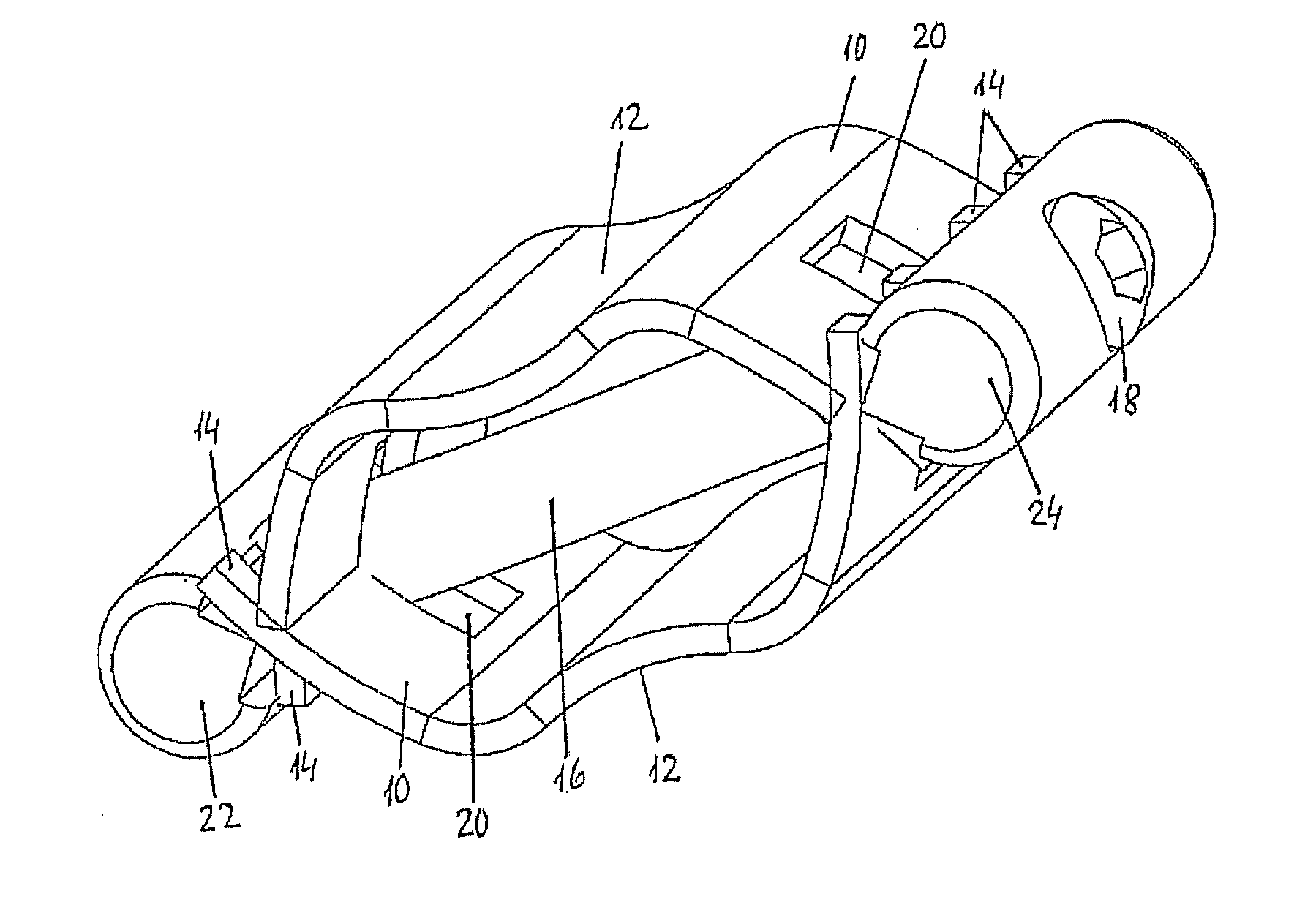Spinous process implant spacer and method of use therefor
a technology of implant spacer and spinous process, which is applied in the field of spacer, can solve the problems of lumbar spinal canal stenosis, unfavorable unilateral implant insertion, and decompression of nerve structure, and achieve the effect of easy implant insertion
- Summary
- Abstract
- Description
- Claims
- Application Information
AI Technical Summary
Benefits of technology
Problems solved by technology
Method used
Image
Examples
first embodiment
[0032]FIGS. 1-4 show the spinous process implant. The implant presents upper and lower support means that are designed as a spring leaf 10. The upper spring leaf 10.1 and the lower spring leaf 10.2 here are parts with identical shape that, however, are arranged with mutual twisting by 180° about the longitudinal middle axis of the implant. The spring leaves 10 have the shape of a longitudinally stretched, flat band that is shape elastic, i.e., it maintains its shape, although it is deformable when exposed to a relatively strong elastic resetting force. The spring leaves 10 are manufactured for this purpose from an appropriate biocompatible material, for example, from a metal, particularly a titanium alloy, or from an appropriate plastic, for example PEEK. The spring leaves 10 present, for example, a length of 15-30 mm, preferably 20-25 mm, a width of 4-8 mm, and a thickness of 0.8-1.2 mm.
[0033]The spring leaves 10 form a convex bulge, upward or downward, in their longitudinal direct...
second embodiment
[0038]FIGS. 5-9 represent the spinous process implant.
[0039]In this embodiment, the support means are designed as support plates 32. On the upper side, a left support plate 32.1 and a right support plate 32.2 are provided, and, accordingly, on the lower side, a left support plate 32.3 and a right support plate 32.4 are provided. The support plates 32.1, 32.2, 32.3 and 32.4 all have the same shape. The support plates 32 consist of an appropriate biocompatible, dimensionally stable material, for example, metal, particularly a titanium alloy or preferably an appropriate plastic, particularly PEEK. The fact that the shape of the support plates 32.1, 32.2, 32.3 and 32.4 is the same is advantageous with regard to the manufacturing costs.
[0040]The support plates 32 present the shape of a plate which is stretched in the longitudinal direction, with a length of approximately 15-30 mm, and a width of approximately 4-8 mm. The thickness of the material is approximately 1-2 mm. The support plat...
PUM
 Login to View More
Login to View More Abstract
Description
Claims
Application Information
 Login to View More
Login to View More - R&D
- Intellectual Property
- Life Sciences
- Materials
- Tech Scout
- Unparalleled Data Quality
- Higher Quality Content
- 60% Fewer Hallucinations
Browse by: Latest US Patents, China's latest patents, Technical Efficacy Thesaurus, Application Domain, Technology Topic, Popular Technical Reports.
© 2025 PatSnap. All rights reserved.Legal|Privacy policy|Modern Slavery Act Transparency Statement|Sitemap|About US| Contact US: help@patsnap.com



